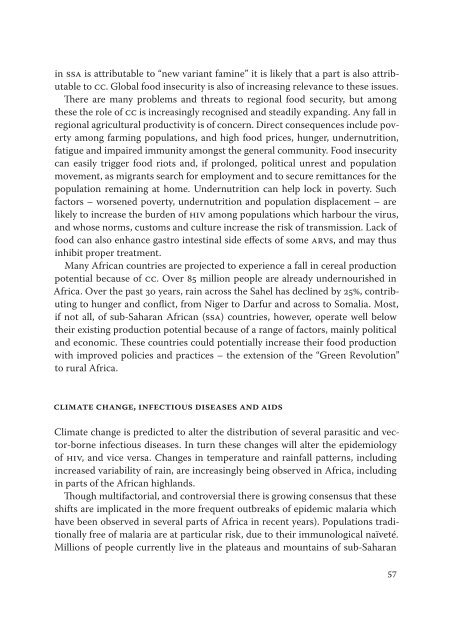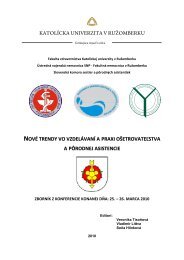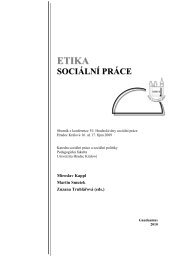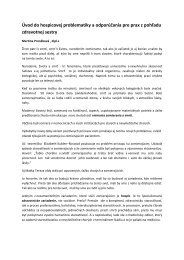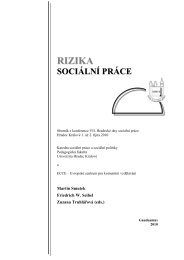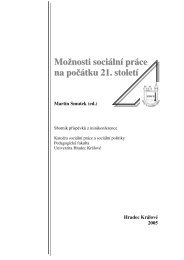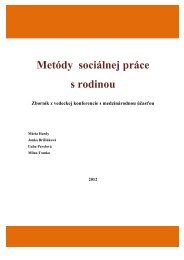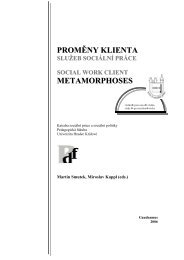Zmena klÃmy â možný dopad (nielen) na obyvateľstvo - Prohuman
Zmena klÃmy â možný dopad (nielen) na obyvateľstvo - Prohuman
Zmena klÃmy â možný dopad (nielen) na obyvateľstvo - Prohuman
You also want an ePaper? Increase the reach of your titles
YUMPU automatically turns print PDFs into web optimized ePapers that Google loves.
in SSA is attributable to “new variant famine” it is likely that a part is also attributable<br />
to CC. Global food insecurity is also of increasing relevance to these issues.<br />
There are many problems and threats to regio<strong>na</strong>l food security, but among<br />
these the role of CC is increasingly recognised and steadily expanding. Any fall in<br />
regio<strong>na</strong>l agricultural productivity is of concern. Direct consequences include poverty<br />
among farming populations, and high food prices, hunger, undernutrition,<br />
fatigue and impaired immunity amongst the general community. Food insecurity<br />
can easily trigger food riots and, if prolonged, political unrest and population<br />
movement, as migrants search for employment and to secure remittances for the<br />
population remaining at home. Undernutrition can help lock in poverty. Such<br />
factors – worsened poverty, undernutrition and population displacement – are<br />
likely to increase the burden of HIV among populations which harbour the virus,<br />
and whose norms, customs and culture increase the risk of transmission. Lack of<br />
food can also enhance gastro intesti<strong>na</strong>l side effects of some ARVs, and may thus<br />
inhibit proper treatment.<br />
Many African countries are projected to experience a fall in cereal production<br />
potential because of CC. Over 85 million people are already undernourished in<br />
Africa. Over the past 30 years, rain across the Sahel has declined by 25%, contributing<br />
to hunger and conflict, from Niger to Darfur and across to Somalia. Most,<br />
if not all, of sub-Saharan African (SSA) countries, however, operate well below<br />
their existing production potential because of a range of factors, mainly political<br />
and economic. These countries could potentially increase their food production<br />
with improved policies and practices – the extension of the “Green Revolution”<br />
to rural Africa.<br />
Climate Change, Infectious Diseases and AIDS<br />
Climate change is predicted to alter the distribution of several parasitic and vector-borne<br />
infectious diseases. In turn these changes will alter the epidemiology<br />
of HIV, and vice versa. Changes in temperature and rainfall patterns, including<br />
increased variability of rain, are increasingly being observed in Africa, including<br />
in parts of the African highlands.<br />
Though multifactorial, and controversial there is growing consensus that these<br />
shifts are implicated in the more frequent outbreaks of epidemic malaria which<br />
have been observed in several parts of Africa in recent years). Populations traditio<strong>na</strong>lly<br />
free of malaria are at particular risk, due to their immunological <strong>na</strong>ïveté.<br />
Millions of people currently live in the plateaus and mountains of sub-Saharan<br />
57


